|
I read in more than
one of my photography books that the best light for landscape
is during sunrise and in the early morning, and I've been itching
to test this theory. On Tuesday, the 17th, I was finally able
to rise early enough (around 5:00) to get out somewhere interesting
for sunrise. I decided to go to Rennie Road in Pitt Meadows. Rennie
Road is the road that leads to Grant Narrows Park and Pitt Lake,
and I planned to head on up to the park once the sun was firmly
up.
Well, due to some unexpected
detours (I couldn't quite find my way to Rennie Road in the dark),
I didn't get set up until almost 6:00. But that was okay, because
the sun had not yet peeked over Golden Ears (the mountains to
the east of where I was). As the mosquitos swarmed me, I pulled
down my sleeves and hit my exposed areas with bug spray. Then
I set up my tripod and started shooting.
To the east of my location
was a ditch, a field, and the sunrise.
|
|
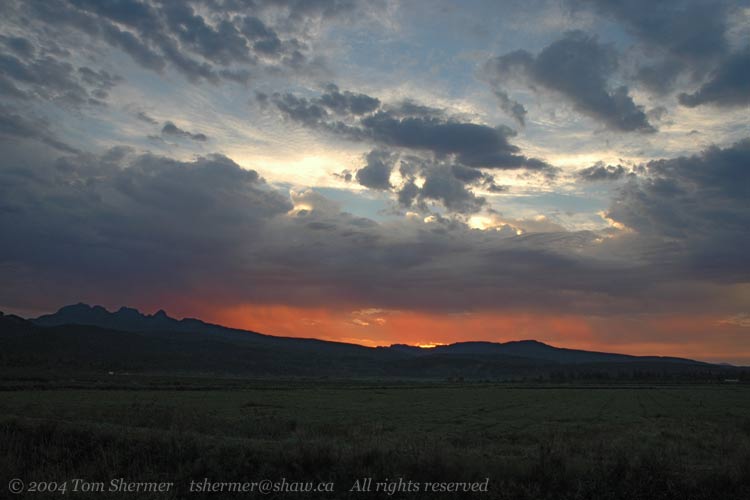 |
|
There were a few bolts
of lightning behind the mountains to my north. That was neat,
because lightning is pretty rare here. I tried to catch a lightning
bolt with my camera, but wasn't able to. I just couldn't guess
when the bolts were going to strike--they were too sporadic.
Here are the mountains
to the north, sans lightning. On the left is Rennie Road.
|
|
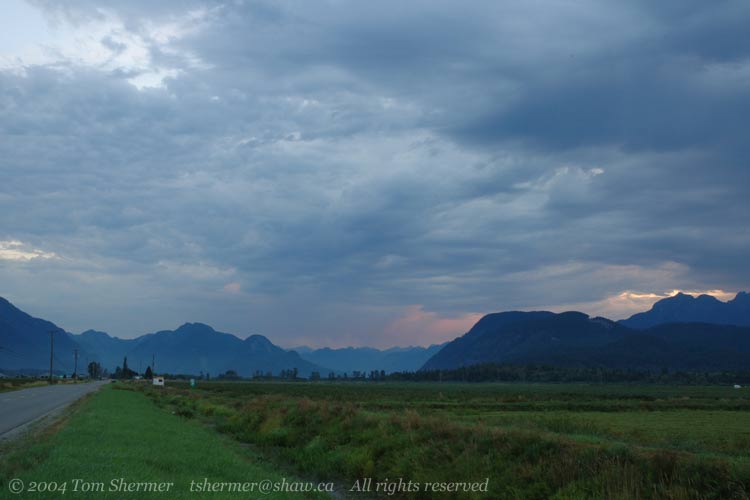 |
|
I was quite happy with
the colors that I got. I was using my wide lens with minimum apeture
(for sharpness throughout) and long exposures. For example, the
photo above used a 2-second exposure. This sort of exposure often
gives very saturated colors.
Here's another photo
over the fields to the east.
|
|
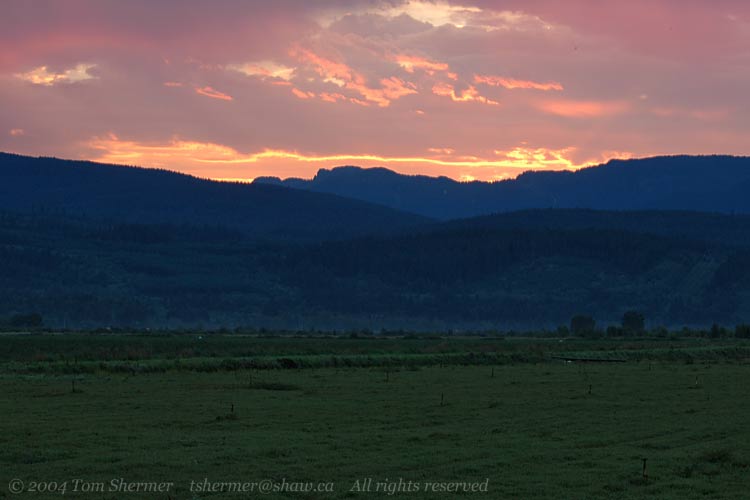 |
|
At about 6:30 I called
it quits on the location I was at and went further up the road
to see if anywhere else looked promising. I didn't find any other
landscape spots and ended up at the entrance to Grant Narrows
Park fairly quickly. There I got out of the car and looked around
for birds, as the area around the gate has proven to be a good
birding location. There were a couple of small flitty birds, maybe
warblers or goldfinches, in the bushes, but there wasn't enough
light to get photos of them.
Not finding anything
else of note there, I headed on into the park and did what one
would expect me to do in a park--I parked. I got my gear and went
north along the dyke between Pitt Lake and the Pitt-Addington
Marsh. To the west, on the lake side, is a prominent Osprey nest
that I knew about. I saw three Ospreys at the nest, and watched
two of them take off to go hunting. Here's the one that stayed
behind.
|
|
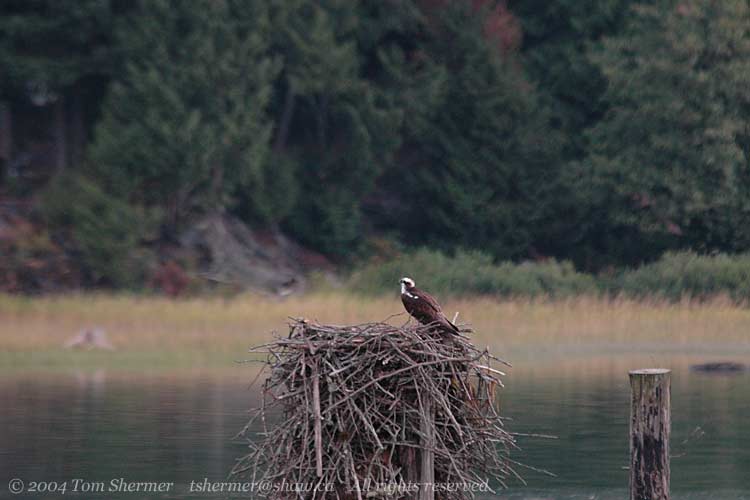 |
|
I walked a bit further
north, to a viewing platform that looks out over the marsh. From
the base of the platform I took some photos of Pitt Lake and the
mountains behind it.
|
|
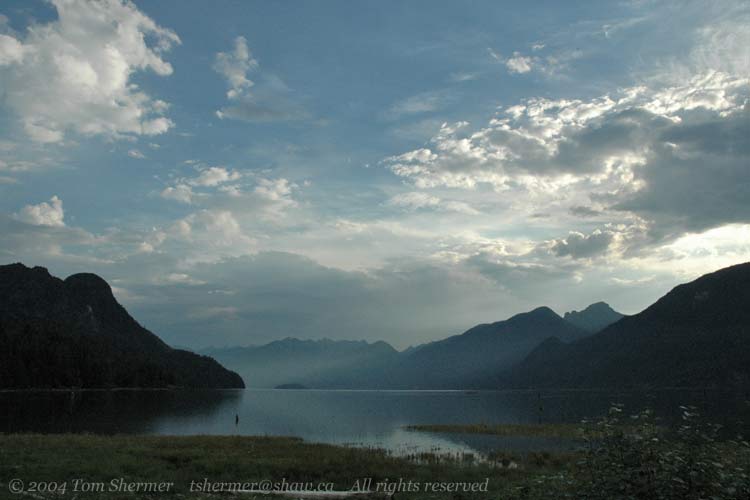 |
|
The marsh is fairly
expansive. It's hard to do it justice with a photo. Maybe I should
take a panorama of it.
|
|
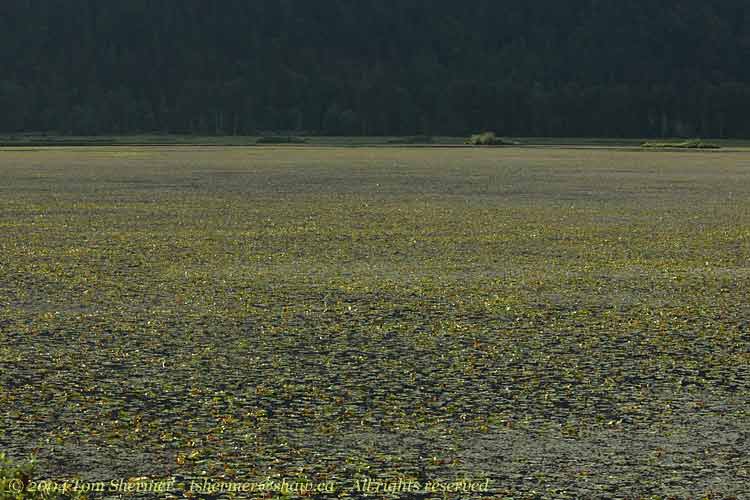 |
| In
the bushes and trees on the east side of the dyke, I noticed some
movement. I went over and sat down on that side with my camera.
After a little wait and a little pishing, I had some warblers come
out to see me. Here's the first guy I saw. He's a (male) Common
Yellowthroat, in his first winter plumage. What seems unusual about
him to me is that he has dark face markings next to the yellow,
which is indicative of the eastern variety of Common Yellowthroat,
and not of the western variety. Maybe his parents got a little lost. |
|
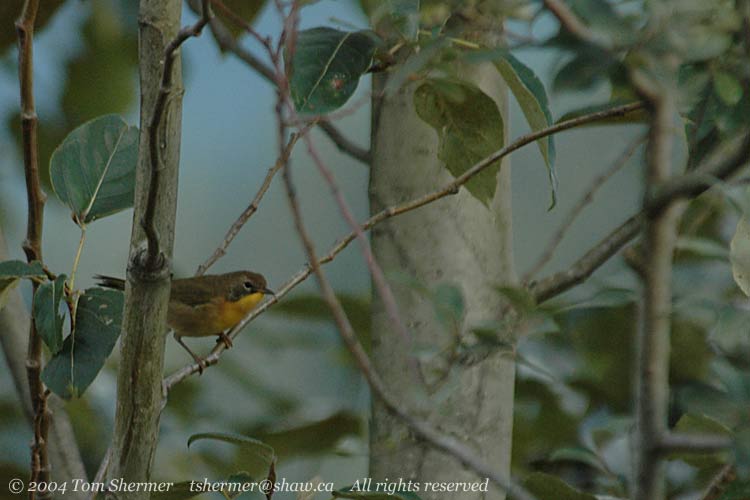 |
|
The next bird to come
visit was this one, who I think is a Willow Flycatcher. He didn't
stick around for long.
|
|
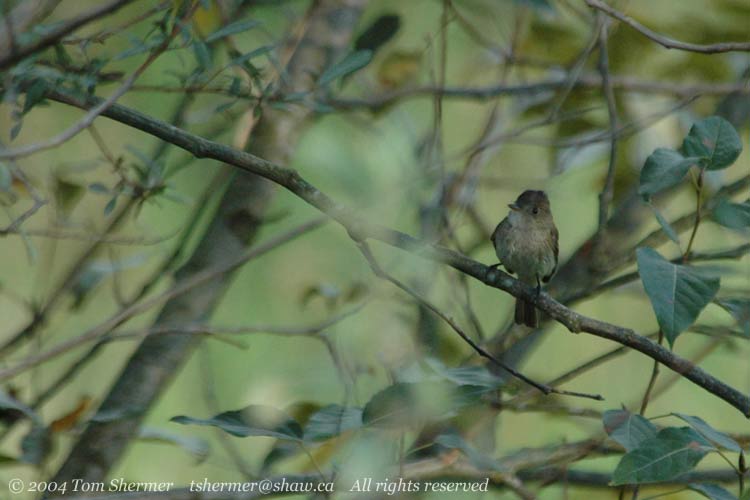 |
|
After him, a couple
of fluffy little warblers appeared. They were juvenile Yellow
Warblers.
|
|
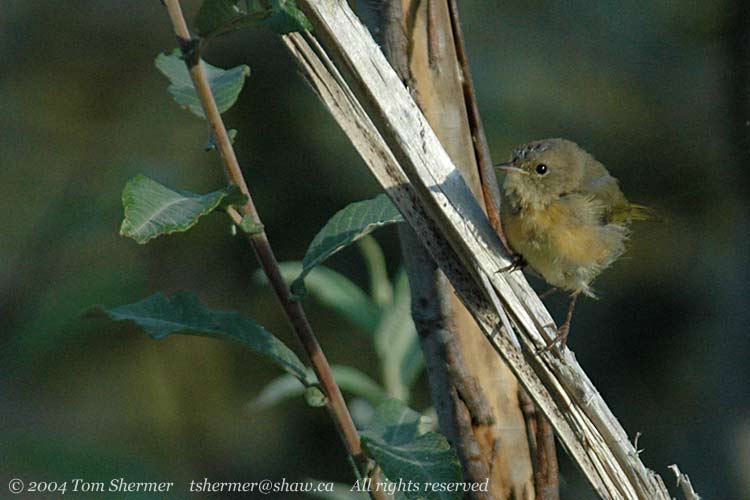 |
|
After the birds lost
interest in me, I got up and walked south, back towards the parking
lot.
At the nest, the lone
Osprey was making some noise.
|
|
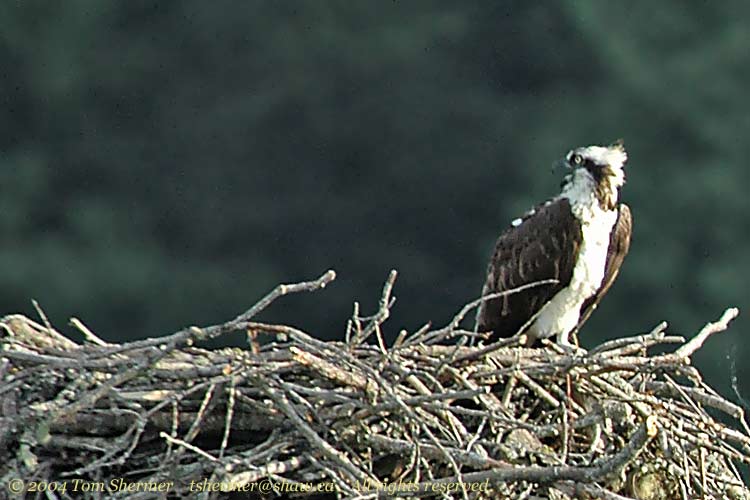 |
|
A young gull flew past.
I tend to think of gulls as being found only by the ocean, but
that, as this guy is pointing out, is a misconception.
|
|
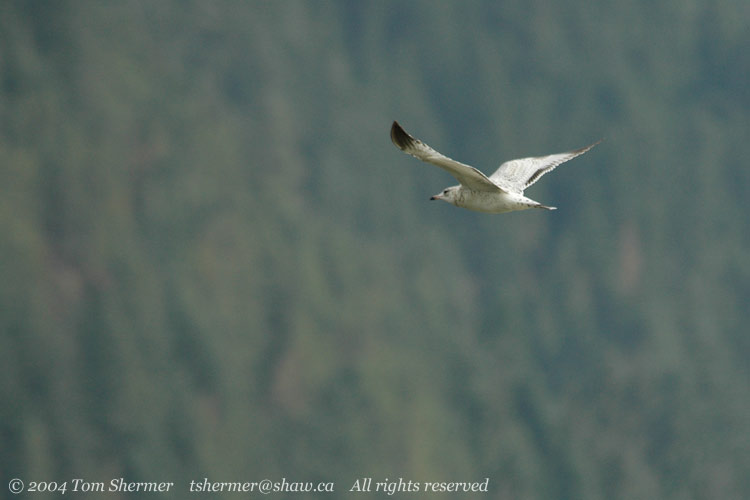 |
|
A tugboat was coming
up the river towards the lake, towing a barge. I caught a picture
of an Osprey pausing to watch the tug pass.
|
|
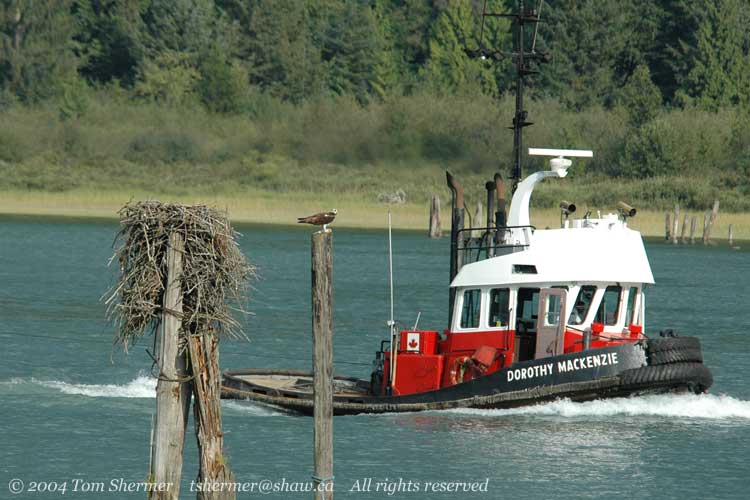 |
| This was
a different osprey than the one before; this one had been out hunting
and had just arrived at the pole next to the nest with a fish to
eat. By the time the barge passes the nest, the osprey had returned
his attention to his meal. |
|
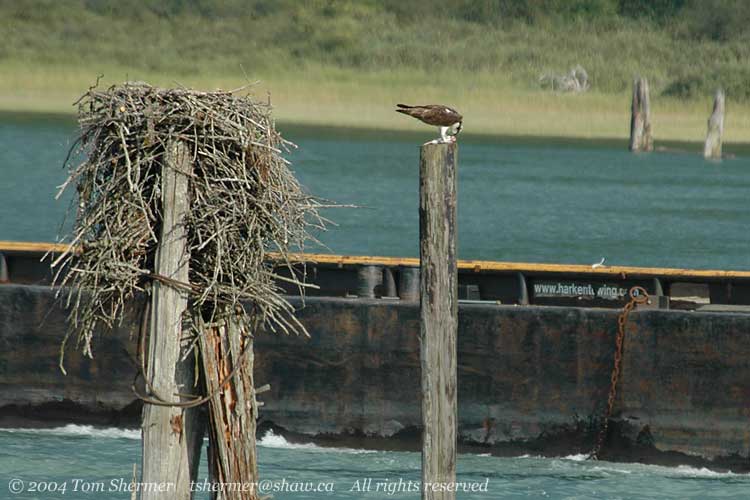 |
| Back near
the snack bar, I saw a few young Cedar Waxwings, and a couple of
Eastern Kingbirds. The kingbirds were quite cooperative subjects.
|
|
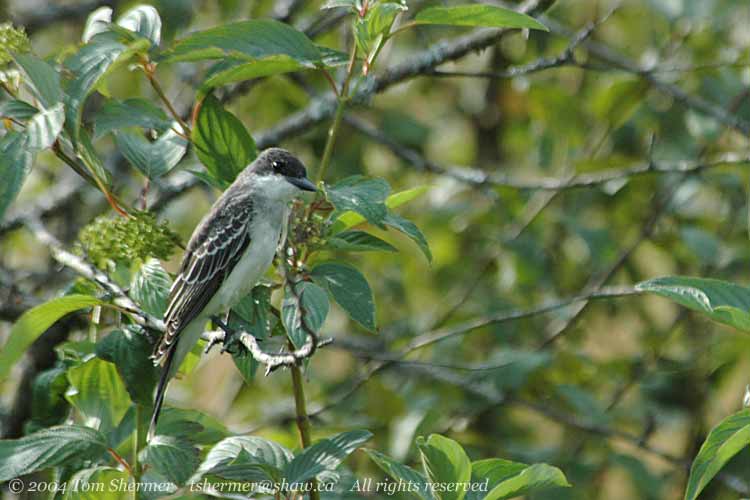 |
|
It was a little after
9:00 and I had to get to work sometime in the morning to prepare
for an afternoon meeting. So I proceeded to my car and started
heading back towards Burnaby. On the way back, I stopped beside
Swan-e-Set golf course to take pictures of the cattle that were
grazing in the deep rough along the road.
Here's #307, who didn't
seem to happy to see me.
|
|
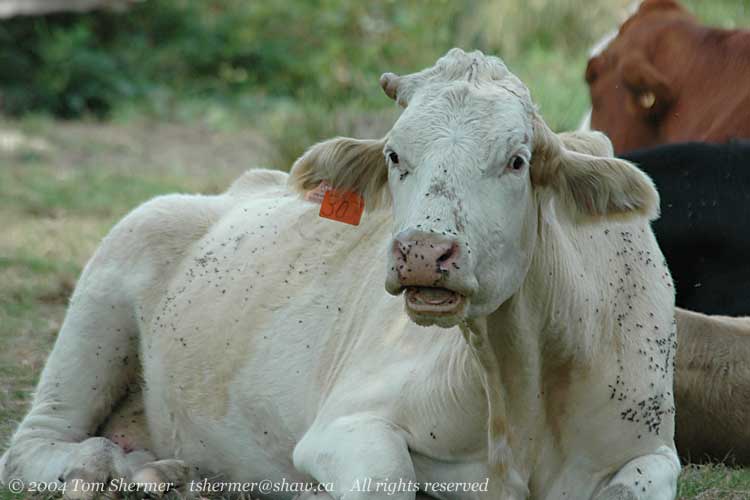 |
| A little
further down, I stopped to take a photo of #11, who also complained. |
|
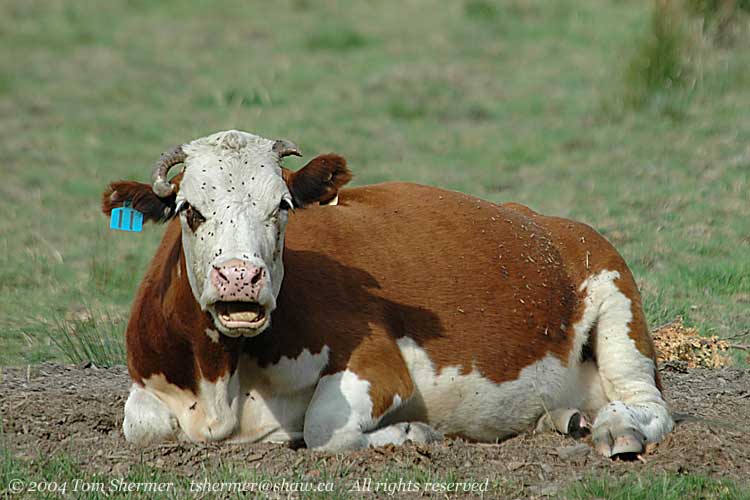 |
| The big
bull seemed a bit more friendly, or at least more tolerant of me. |
|
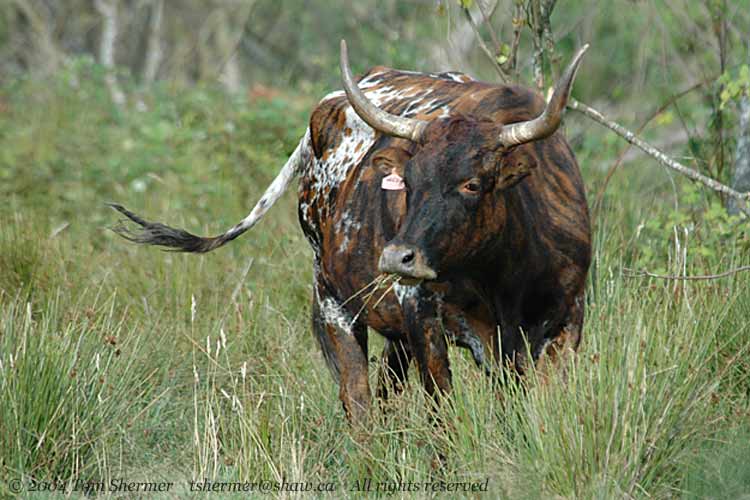 |
| Further
down the road, I came upon a farm with some roosters out front.
This guy came out towards my car when I pulled over. |
|
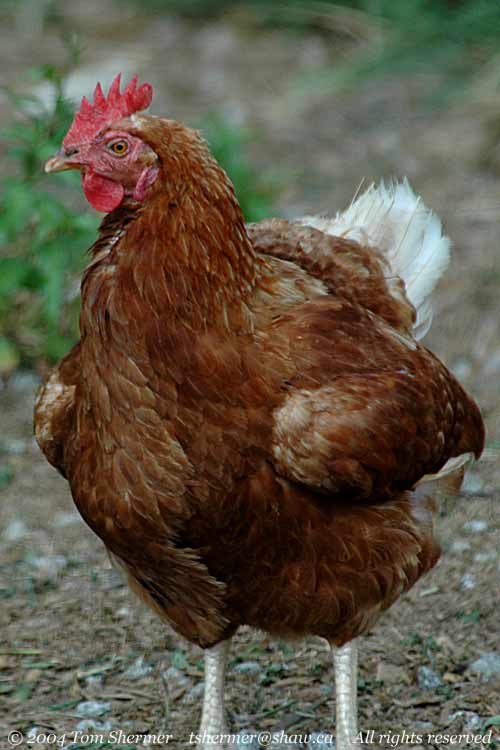 |
| The last
stop I made on my drive back to work was by a farm where there were
several workers out in the field. As is the case at many farms around
here, the workers were East Indian. |
|
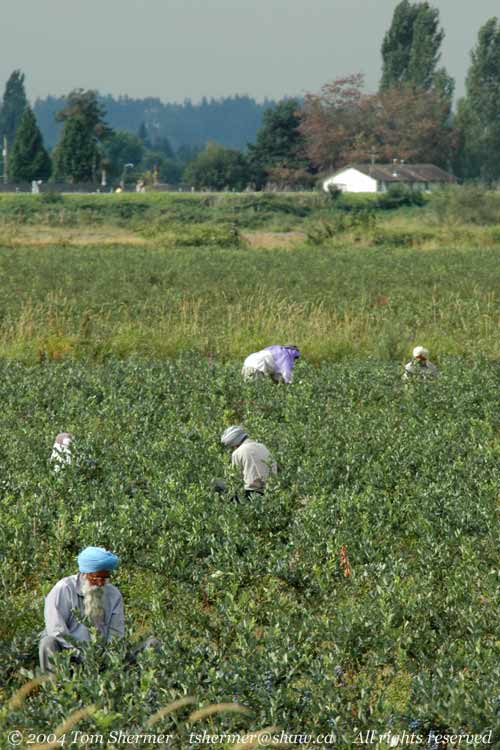 |
|
I breezed through my
work day, having had such an interesting morning. However, by
the time work was over, I was getting very sleepy and had to go
home and take a long nap.
My next installment
will be about an expedition to the wilds of Vancouver.
Your envoy to the warblers,
Tom
|
|